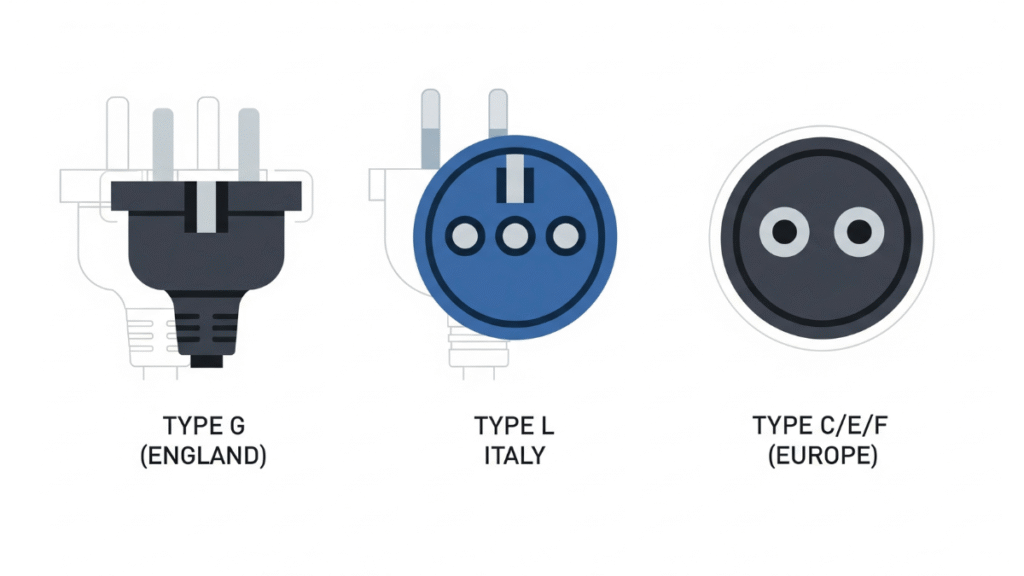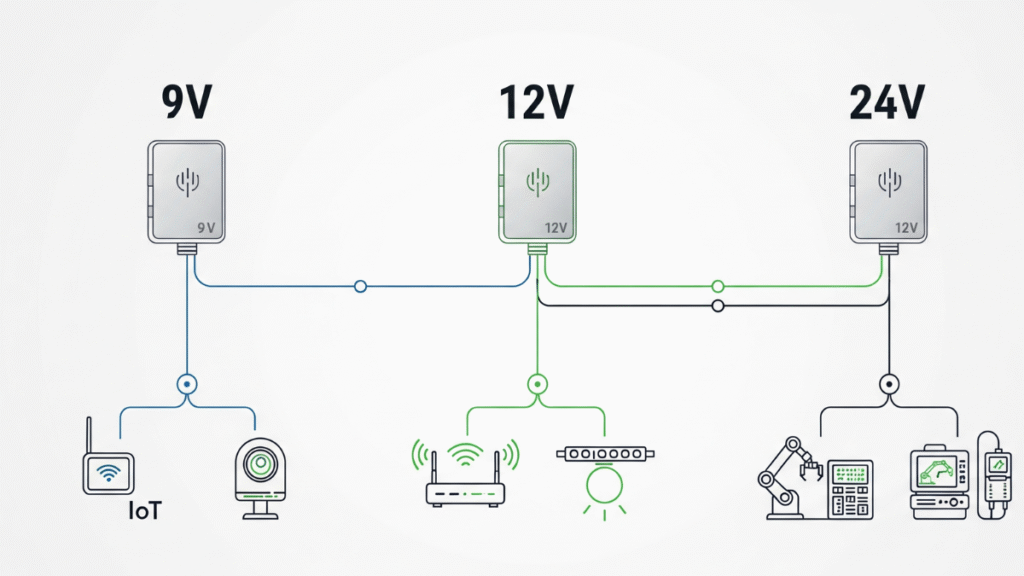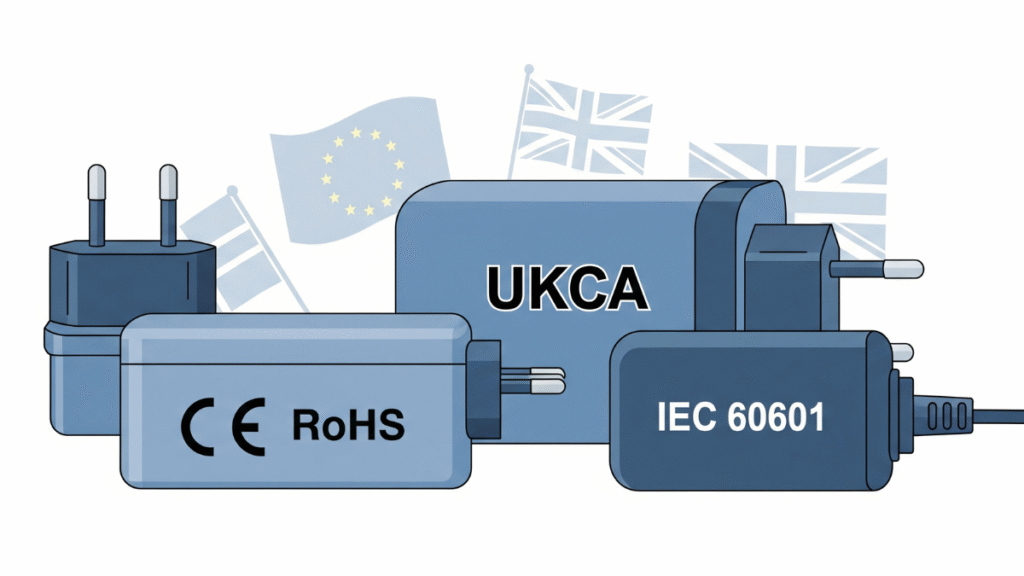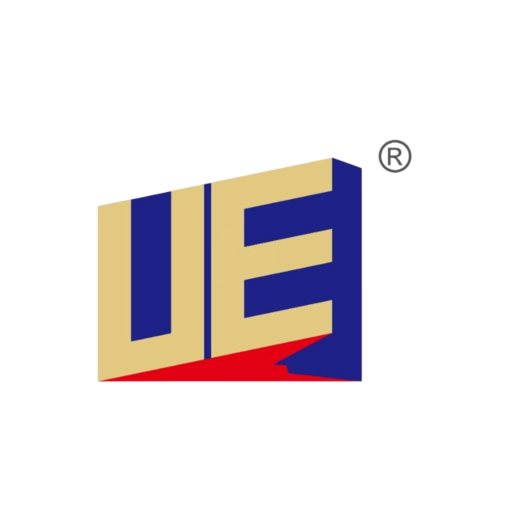Introduction
The European market has long been one of the most important destinations for manufacturers of power supplies and adapters. From consumer electronics to industrial automation and from medical equipment to communication systems, the demand for reliable, safe, and efficient power solutions continues to expand. Yet, entering the European market is not simply a matter of shipping products with a CE mark. The region is fragmented when it comes to plug standards, certification requirements, and even voltage tolerances.
For B2B manufacturers, the differentiation between power adapter England, power adapter for Italy, and power adapter for Europe is more than a marketing term. It represents a series of technical, regulatory, and supply chain decisions that determine whether a product will be successfully accepted by customers in different markets. At the same time, voltage-specific adapters such as power adapter 9v, power adapter 12v, and power supply 24v remain the backbone of thousands of devices used across industries. This article provides a deep dive into these topics, serving as a reference for manufacturers and procurement specialists operating in the global power supply industry.
The European Power Supply Market Landscape
Europe represents one of the largest and most mature markets for power adapters. Although the region largely operates on a 230V, 50Hz electrical standard, the diversity of plug types, certification systems, and customer preferences makes it complex for manufacturers.
While Germany, France, and most continental EU members rely on Type C, E, or F plugs, Italy uses its unique Type L standard, and England (together with the wider United Kingdom) adopts the Type G plug. For manufacturers, this means that a one-size-fits-all approach is not viable. Products must be carefully localized, and certifications must reflect both EU-wide requirements and national regulations.
This is where the terms power adapter England, power adapter for Italy, and power adapter for Europe gain importance. Each reflects a different market entry pathway, a specific set of compliance requirements, and unique customer expectations.

Power Adapter England: Market Requirements and Applications
The UK uses the Type G plug standard, defined by BS1363, which requires three rectangular prongs, often with integrated fuses. After Brexit, the regulatory environment also shifted, as the UKCA marking replaced the CE mark for goods placed on the UK market.
For manufacturers, a power adapter in England is more than just a plug variation. It requires:
- Compliance with UKCA and BS1363 standards.
- Voltage compatibility with 230V / 50Hz.
- Safety certifications that align with both consumer and industrial requirements.
Applications in the UK market:
- Power adapter 9V: Common for small electronics such as networking devices, audio systems, and handheld medical monitors.
- Power adapter 12V: Widely adopted in routers, security systems, LED lighting, and consumer appliances.
- Power supply 24V: Frequently used in medical imaging equipment, industrial controllers, and automation systems.
For manufacturers selling into the UK, failing to align with the correct standards can result in customs rejection, legal penalties, or product recalls. Therefore, offering a robust power adapter in England is critical for long-term partnerships.
Power Adapter for Italy: Local Standards and Industrial Adoption
Italy is unique within Europe due to its reliance on the Type L plug, which uses three round pins aligned in a row. While Type C plugs are also accepted in some sockets, the Italian market still requires a dedicated solution for full compatibility.
For manufacturers, providing a power adapter for Italy involves:
- Compliance with CE, RoHS, and REACH regulations.
- Designing for Type L sockets while also supporting Type C compatibility.
- Serving industries with high demand for reliable power adapters, such as medical diagnostics, automotive electronics, and industrial equipment.
Applications in Italy:
- Power adapter 9V: Typically used in laboratory instruments, POS terminals, and portable test devices.
- Power adapter 12V: Serves a broad base of consumer electronics, telecom equipment, and smart devices.
- Power supply 24V: Integral in automation systems, advanced manufacturing equipment, and hospital devices requiring continuous and stable power delivery.
A well-designed power adapter for Italy ensures manufacturers can meet both end-user compatibility and regulatory compliance, while offering flexible voltage options for different product lines.
Power Adapter for Europe: Covering the Continental Market
The majority of continental Europe—including France, Germany, Spain, and the Netherlands—relies on Type C, E, and F plugs. For manufacturers, offering a power adapter for Europe provides an efficient solution to cover multiple countries under one standardized design.
Key requirements for this region include:
- CE marking for EU-wide compliance.
- Energy efficiency compliance under ErP directives.
- Environmental safety under RoHS and REACH.
Applications in the EU continental market:
- Power adapter 9V: Used in IoT devices, portable audio systems, and small appliances.
- Power adapter 12V: Supports surveillance systems, consumer electronics, and telecommunications hardware.
- Power adapter 24V: Vital in heavy industrial automation, robotics, and advanced medical systems.
By consolidating the requirements across the EU, manufacturers can streamline production, lower costs, and scale faster. However, they must still recognize exceptions such as the UK and Italy, which require specific designs.
Voltage Levels and Their Industrial Significance
Power Adapter 9V
A power adapter 9V is one of the most widely used low-voltage solutions in the electronics industry. It powers sensors, handheld devices, and entry-level IoT equipment. For B2B buyers, the focus is often on size, efficiency, and certification for low-voltage safety.
Power Adapter 12V
The power adapter 12V is arguably the most popular choice in consumer and industrial electronics. It provides the balance between low power consumption and versatility. Applications range from routers and set-top boxes to medical diagnostic tools. Manufacturers across England, Italy, and Europe frequently standardize on 12V designs, making it a must-have in any adapter portfolio.
Power Adapter 24V
The power adapter 24V is essential in the industrial and medical segments. It delivers the higher power needed for automation controllers, robotics, imaging devices, and professional communication systems. Unlike 9V and 12V adapters, 24V solutions often require stricter compliance with IEC 60601 for medical equipment or industrial EMC standards.

Compliance and Certification: The Foundation of European Market Entry
B2B buyers in Europe rarely evaluate a power adapter based only on cost or specifications. Certifications are often the deciding factor.
- UKCA vs CE: The UK requires UKCA, while the EU requires CE. Products must be tested and labeled accordingly.
- RoHS and REACH: Environmental compliance ensures restricted use of hazardous materials.
- IEC 60601: Critical for medical applications, ensuring patient and operator safety.
- ErP: Energy-related product regulations enforce efficiency requirements.
Whether selling a power adapter for England, Italy, or Europe, manufacturers must present compliance documents, testing reports, and certifications to satisfy procurement managers.

Procurement Priorities in the B2B Market
When European manufacturers procure adapters such as a power adapter 9v, a power adapter 12v, or a power supply 24v, they look beyond the product itself. Their priorities include:
- Reliability: Long-term stable performance.
- Scalability: Ability to support mass production demands.
- Customization: Tailoring plugs, voltages, or branding to specific requirements.
- Logistics: Ensuring timely delivery and consistent after-sales support.
- Future-proof compliance: Staying aligned with evolving EU and UK regulatory standards.
Manufacturer Advantages and Capabilities
A competitive power adapter manufacturer should offer:
- Coverage across different markets with dedicated solutions: power adapter England, power adapter for Italy, power adapter for Europe.
- Complete voltage options, including a power adapter 9V, a power adapter 12V, and a power supply 24V.
- Global certification experience, ensuring faster market entry for partners.
- Strong OEM/ODM capabilities for customized designs.
- Large-scale production and stable supply chain management.
These capabilities allow B2B customers to focus on product innovation while relying on their partners for power supply expertise.
Conclusion
The European power adapter market represents both an opportunity and a challenge for manufacturers. While voltage standards are largely unified at 230V/50Hz, the diversity of plug types and regulatory environments across England, Italy, and continental Europe requires tailored solutions.
For manufacturers and procurement specialists, the differentiation between power adapters England, power adapters for Italy, and power adapters for Europe is a fundamental part of entering the market. At the same time, product portfolios must include common voltage categories such as power adapter 9v, power adapter 12v, and power supply 24v, each serving specific industrial and consumer applications.
By aligning with certification requirements, delivering customized solutions, and offering stable supply capacity, manufacturers can establish long-term partnerships in the European market. In this landscape, the power adapter is not just a component—it is a strategic enabler for growth across industries.




